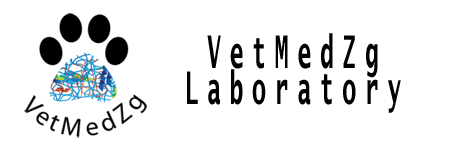Sample preparation (biofluids, cells, tissues)
Depletion and enrichment of samples
2D and Differential in-gel-electrophoresis (DIGE)
Identification of proteins separated by 1D/2D-PAGE
Protein identification by LC-MS/MS
Protein quantification by LC-MS/MS
Identification of specific post-translational modifications (e.g. phosphorylation)
Western blot
Dot-blot
Protein identification and quantification by LC-MS/MS
Proteins are biomolecules of structural and functional importance for every living organism. The emerging list of completely genome sequences of eukaryotic and prokaryotic species has directed the focus to identification, characterization and quantification of gene products expressed in cells, tissues, organs or even in a given organism. In order to manage the huge amounts of samples and data produced, high-throughput methodologies such as LC-MS and bioinformatics have been applied in the field of proteomics.
Depletion and enrichment of samples
Why do you need depletion and enrichment?
Most biofluids contain high abundance proteins, such as albumin and immunoglobulins (IgGs), which can mask the presence of low-abundant proteins and therefore make their detection difficult. Therefore, depletion and enrichment of protein samples is a necessary procedure in biofluid proteomics workflow prior to digestion and separation of proteins. We provide the service of albumin and IgG depletion of biofluid samples, and also enrichment and depletion with commercial kits.
What do you need to provide?
We need frozen plasma/serum/urine samples, kept on dry ice during transport.
Protein identification and quantification by LC-MS/MS
Protein identification and quantification by LC-MS/MS
Why do you need protein identification and/or quantification?
Protein expression levels are not strictly determined by cell gene regulation system but are also influenced by environmental stimuli (e.g. stress, drug intake, nutrition) and cells physiological or pathological state (e.g. disease). In order to determine molecular mechanisms in cells, protein biomarkers for the given condition or protein interaction mapps (protein-protein and protein-ligand interactions) it is important to identify deregulated proteins for each case compared to control samples.
When identified, protein(s) of interest can also be quantified using label free relative quantification in order to obtain the level of deregulation for the targeted protein (biomarker).
How we will proceed?
Protein identification can be conducted via nano-flow liquid chromatography system, coupled to a tandem mass spectrometer (nLC-MS/MS) using peptide mass fingerprinting. In short, depending on experimental design, complex protein mixtures are resolved prior to analysis, usually by electrophoretic (gel electrophoresis) or chromatographic (ion exchange, affinity or reverse phase chromatography) methods. Proteins are digested in solution or in gel using trypsin and resulting peptides are resolved by nLC-MS/MS. The masses of the parent ions and their fragments are used for database search of known protein sequences to match to in silico digestion patterns of the proteins for obtaining protein identities. Matches are made using search algorithms and scoring system.
For quantification purposes, peptides are spiked with an internal standard to ensure no chromatographic drift during the run. Intensity-based relative quantification provides the information about deregulated peptides and obtained data are then converted to deregulation pattern at the protein level.
What do you need to provide?
You can provide us the biological samples, SDS-PAGE gel or gel pieces that should be appropriately stored prior to deliverance (liquid nitrogen, -80°C or -20° for biological samples). Please contact the group members for the details.
Gels should be stored in milli-q water or in 1% acetic acid (for longer period) to avoid drying.
The samples need to be shipped in an appropriate manner (refrigerated, in ice, in dry ice, etc.).
Regarding the starting amount of proteins resolved by PAGE, Coomassie blue stained bands/spots are the preferred ones, but MS compatible silver stained gels can be also used. We recommend the protocol developed by Shevchenko et al. Anal. Chem. 68; 850-858. (1996).
NOTE: It is very important to use powder free gloves and lab coat to avoid keratin contamination during sample preparation and manipulation. It is highly advisable to deliver samples in Eppendorf brand tubes to avoid plastic polymers contamination.
What are the limitations of protein identification and quantification by LC-MS/MS?
• Samples should be prepared and stored at appropriate manner to avoid protein degradation and aggregation.
• For protein identification, proteins should be purified from an organism with a sequenced genome.
• It is very important to deliver the sufficient amount of protein material. Low abundant proteins in the sample may not be identified (and/or quantified).
• The number of sample preparation steps can introduce different levels of error. This can be improved by analyzing samples in replicate. Introducing immobilized trypsin digestion into sample preparation can also minimize the number of steps and increases reproducibility and accuracy, which is especially important for quantitative MS analyses.
• LC-MS/MS method limitations such as chromatographic peak resolution and peptide ionization or fragment ion signal intensities obtained by MS method due to its primary structure can also influence the results.
What results we will provide?
Report will be delivered for each of the samples, but it varies depending of the type of the analysis. (e.g. the list of identified proteins for each sample with belonging protein scores, relative or absolute quantities for a specific protein/peptide, interactome). Our team will help users in data interpretation.
